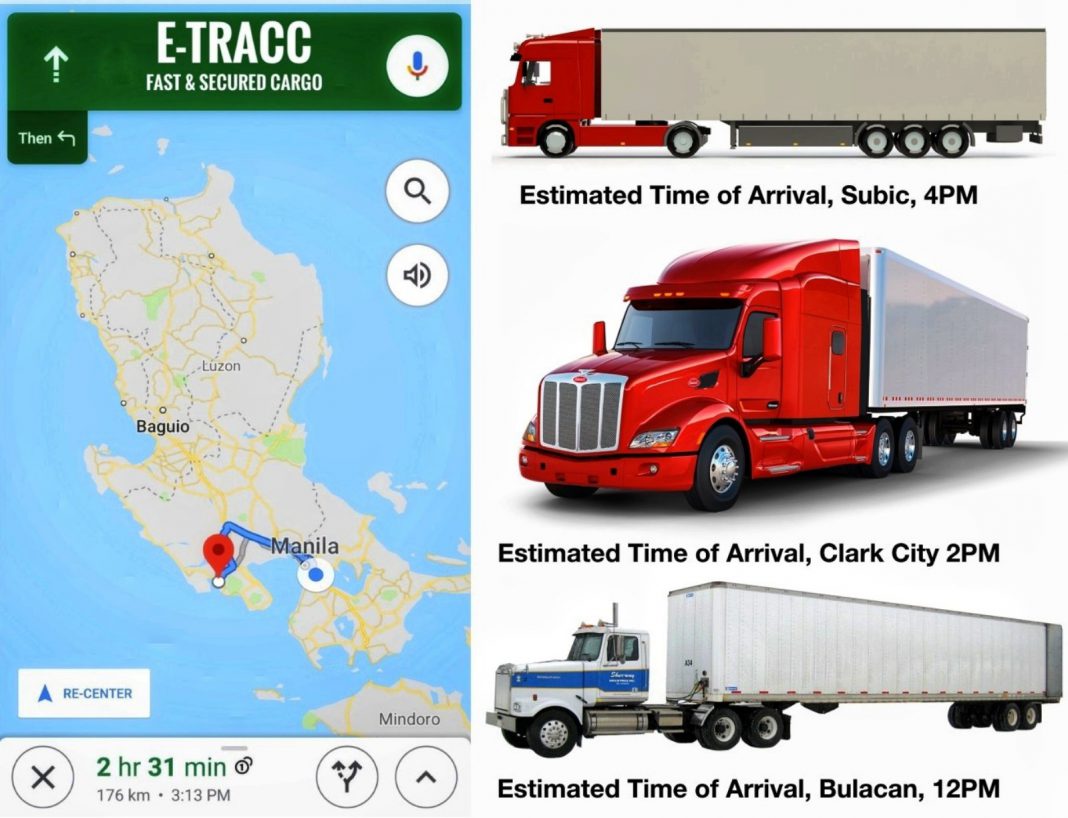Graphic from THEPHILBIZNEWS
By THEPHILBIZNEWS STAFF
Heeding the call for more efficient and lessen the bottleneck in the handling and delivery of the cargoes, the Bureau of Customs (BOC) is set to implement this month the Electronic Tracking of Containerized Cargo (E-TRACC) System, which will enable real-time monitoring of the location and movement of containerized cargo and secure its transport to the intended destinations using GPS-enabled tracking devices.
In an internal order to collectors dated June 11, BOC Deputy Commissioner James Dy Buco said the E-TRACC will be implemented effective June 18, pursuant to Customs Memorandum Order (CMO) No. 4-2020 establishing an E-TRACC System and the accreditation of the service provider for this purpose.
“Included in the coverage of CMO 4-2020 for E-TRACC are the inland movements of containerized goods from the customs ports intended for (i) the Customs Bonded Warehouse (CBWs) and (ii) the accredited cold storages facilities,” said Dy Buco in the order.
He added that all CBW and cold storage clients should register online in the E-TRACC system at www.ecms.ph “no later than June 17, 2020 in preparation for the implementation scheduled on June 18, 2020 beginning with the Port of Batangas, Port of Manila, and MICP [Manila International Container Port].”
CMO 04-2020 implements and operationalizes the provisions of Customs Administrative Order (CAO) No. 15-2019 (Rules and Regulations for Customs Transit in the Customs Territory), including Section 4.5.3 and Section 5.
Section 4.5.3 of the CAO tasks the Management Information System and Technology Group to “establish an electronic transit cargo monitoring system that would monitor and track the movement of goods under customs Transit that will generate accurate information on Transit of Goods, risk management and responsibilities of parties.”
Section 5 calls for the accreditation of solutions providers for the E-TRACC.
Additionally, Section 4.3 of CMO 4-2020 requires the Electronic Customs Seal for the following cargo movement:
- Transfer of cargo to a container yard or container freight station (CY/CFS) or other customs facility or warehouse (CFW)
- Transit cargo bound to Free Zones, inland customs office, depots or terminals
- Transit to CBWs
- Export of cargo from free zones, inland customs office, depots or terminals and CBWs to port of loading, and
- Transfer of shipments subject to further verification and/or monitoring
Further, Section 6.1 of this CMO provides that all container vans covered under this order shall be affixed an electronic customs seal before clearance is given to depart from the starting point or port of discharge.
Section 12.3 of the same CMO provides the fee structure of the E-TRACC system service provider as follows:
P500 – within 10-kilometer radius from port of discharge
P700 – beyond 10-kilometer radius from port of discharge
Section 12.4 prescribes the BOCÂ’s service fee, which is 10% of the fees collected by the system service provider.
CAO 15-2019 states that it implements Sections 600, 601, and 602 of the Customs Modernization and Tariff Act (CMTA), and covers the movement within the customs territory of foreign goods for outright exportation, warehousing and those admitted to free zones, and transfer of goods from customs facilities and warehouses.
Free Zone, as defined under this CAO, covers Philippine Economic Zone Authority (PEZA) special economic zones, Clark Freeport Zone, Clark Special Economic Zone, Clark Green City, Poro Point Freeport Zone, John Hay Special Economic Zone, Subic Bay Freeport Zone, Aurora Pacific Economic Zone, Cagayan Special Economic Zone, Zamboanga City Special Economic Zone, Freeport Area of Bataan, Morong Special Economic Zone, and other freeports that may be established in the future.
Meanwhile, stakeholders have expressed surprise over the implementation of the E-TRACC during the quarantine period, and are asking if consultations were made when CAO 15-2019 and CMO 4-2020 were drafted and scheduled for implementation.
There are existing procedures and regulations covered by joint memorandum orders (JMOs) between BOC and PEZA, BOC and Subic Bay Metropolitan Authority, and BOC and Freeport Area of Bataan, among others, as well as export documentation and procedures under the Automated Export Documentation System (AEDS) and Expanded AEDS, which may not have been considered when these new regulations were drafted and finalized, they said.
The intent of the regulations may be good but it may add another layer of procedures and logistics cost, and eventually affect our competitiveness, they further said.
Read related stories:
https://thephilbiznews.com/ph-rising-cost-of-logistics-to-affect-supply-chain-cost-of-goods/
https://thephilbiznews.com/japanese-firms-set-to-expand-business-in-ph-hope-govt-eases-customs-procedures/














